The Grimme Storytelling Workshops
Grimme Institute by now almost „traditionally“ organises storytelling workshops for stipendiaries of the Global Media Forum. These workshops take place in the week before the actual conference and aim to teach our participants how to create their own story – in accordance with the latest media technology and methods.
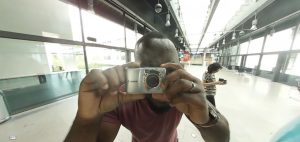
The workshops don’t address people who are technologically professional, equipped with personnel or the necessary funds to buy technical expertise or who are linked – for instance – to studios. The people in our workshops are free-lance journalists, bloggers, activists, associated to NGOs, and want to acquire new and additional skills to employ in their respective work.
The GMF storytelling workshops are organised in co-operation with DW Media Services and supported by the State Chancellery of North Rhine-Westphalia.
Workshop 2017
In 2017, DW Media Services GmbH, organiser of the Global Media Forum, and Grimme Institute invited participants from eight countries to take part in this year’s workshop „The Virtual Reporter – 360° Storytelling“.
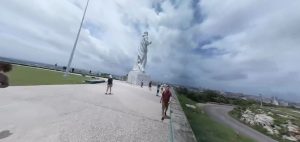
Virtual and Augmented Reality along with 360° video have quickly risen to relevance after a variety of VR hardware (headsets, cameras) hit the shelves. While leading companies such as Google, Microsoft, Facebook and others have all put their faith in this technology, non-expert users still face problems in the production of adequate content.
In our workshop, we produced 360° documentations with our participants, following this year’s GMF motto, „Identity & Diversity“, and including a variety of topics from their respective countries and fields of profession. They were asked to focus on individual experiences in their everyday life, the general situation in their countries as well as in their field of profession.
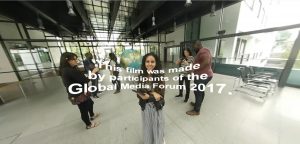
Based on this footage, we were able to get authentic insights into what matters to them – may that be the future of a country, ecological concerns, respect for minorities, the fight against poverty or for better education.
Preparations
We were able to purchase the cameras – we chose the Samsung Gear 360 for our work – for a truly reasonable price (for 150 to 200 € in spring 2017). We added a micro SD card for 10 €, and we were ready to go.
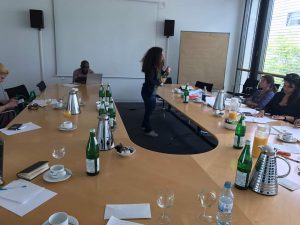
The filming process actually meant: switch the camera on. Press record. Shoot. Press record again. The footage was done. No complicated settings. No further instructions needed.
We sent the cameras to our participants, keeping our fingers crossed that everything would run smoothly. But just a few days into the shipping process, we faced the first obstacles. To cut a long story short: no matter what additional papers and explanations we provided – we were unable to get the cameras to Egypt and Turkey.
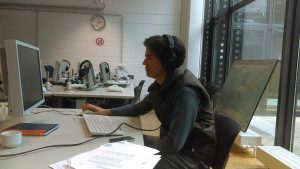
Officials in both countries insisted on sending the cameras to clearing processes, due to security regulations. Our Egyptian participant rented a 360° camera in Cairo – a different brand with a different quality, but we were at least able to include her story in our film.
While the cameras were on their way, we started to prepare the workshop, especially the editing process. We had worked with Vegas Movie Studio Platinum Suite before, and intended to proceed as usual. (You can purchase it or download a trial version here.)
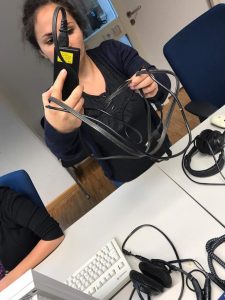
But as easy as the handling of the actual filming was, now it became really complicated. The Samsung Gear 360 comes with a link to a very easy-to-handle software, the Cyberlink Action Director, whose use is for free when you purchase a camera, and which allows you to stitch the material almost automatically. (You can have a look on how to proceed here.)
Stitching means that you „bend“ the regular videos recorded by your camera into a 360° film. That went smoothly, and we were able to see the results very nicely in the latest 360 beta version of the VLC video player which is for free. (You can download it here.)
That encouraged, we wanted to start the editing process in Vegas. We were relieved to see that even the 13 version of Vegas (which we have been working with for the past more than two years) provided 360° settings already. We imported our stitched files – and saw that our audio tracks were lost.
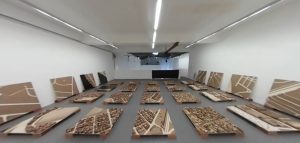
That was when we really needed a solution. And it was this: We first needed to stitch all the material into the 360° format. We converted the stitched material back into a sort of two-dimensional version again. For this, we used the XMedia Recode converter. Then we were able to proceed as before and edit all the material in Vegas: the audio and video files from the camera as well as additional audio, video and text layers. We then rendered the project. And finally, we needed to take the resulting .mp4-video and convert it back to 360° format, using the Spatial Media Metadata Injector.
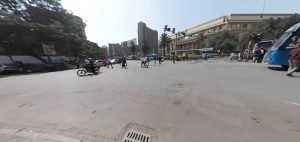
Complicated? Yes. Manageable? Yes again. At least we were able to work. And this is where we stand right now, when it comes to producing 360° films on a non-professional level. There is software available that allows you to manage all of what is mentioned above in one programme. But these are not only quite expensive, they are also programmed for professionals.
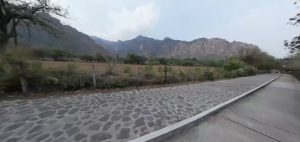
And because of our target group, we always try to work with programmes that don’t cost a lot and that are not too complicated to apply right away. But since 360 degree video became so interesting for so many different areas, we are quite sure that in the near future, not-so-expensive and easier-to-handle software will include all the needed features in one.
Let’s get back to preparing our workshop. Our cameras arrived in Ghana, Kenia, Cuba, Mexico, Brazil and the United States. Our participants started to film right away and sent the material to us so we could stitch and convert everything. (By the way, should you ever plan to do this yourselves: Allow for enough preparation time. It takes you about 45 minutes to stitch a 4-minute video on an average computer …)
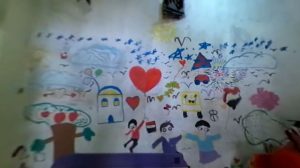
We didn’t know what stories and footage to expect. But once we had a look at the first examples we saw that some of the material was very shaky. Perhaps you tend to forget that the camera is still a fixed point in space when you know that you capture everything around you. Anyway, we asked the participants to hold their cameras very still for further recordings. And most of them still had the time to do so.
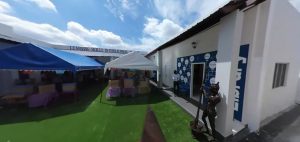
In our workshop, we started with the writing process. We had very individual video material from altogether very different countries, and we needed to find „a story“ that glued everything together. We came up with „Space“ as our common theme. The next day was dedicated to audio recording for these voice-overs in a studio at Deutsche Welle. And then came the core of the entire workshop: editing.
Just a few words on editing 360° videos. That is one of the really interesting – and challenging – things that change. You can say good-bye to linear editing, for instance. There is absolutely no way that you can put up just frame after frame after frame, thereby creating a linear story which the user simply follows. You have to capture his attention again and again because you cannot control the angle which he chooses in any given moment.
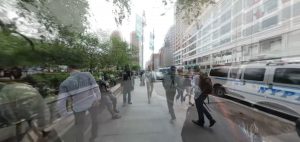
Therefore, you need to work with acoustic signals, for instance, or with integrated, sort of floating titles, to lure the user’s attention back to where you want it. Actually, you no longer create stories, you create a story universe instead. And all you can do in this creative process is try to offer points of interest along which each user makes his own story unfold.
Our participants did all this very nicely. In fact, there was so much that they googled, tried out and inserted on their own. We have never seen anything like it before. They deserve a very big thank-you from us for their patience and their passion to go through this long and complicated process! But their reward is the films they made. Please have a look at them.
